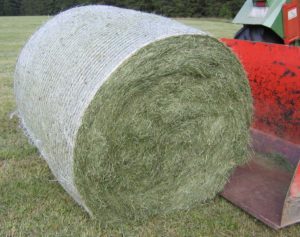Some call it baling twine while others prefer baler twine, but does it matter? For starters, both terms refer to the same material – a small diameter twine which is either sisal or synthetic in composition. The primary purpose of www.SilageWrap.com.au – Balers Twine is to bind fibrous materials such as hay and straw so that they become compact for a more convenient way of stacking, storage, and transportation. Although every variety of baling twine has a unique tensile strength, the truth is all of them are within the range of 95 psi to 325 psi, and we’re talking about a single-ply twine for baling.
material – a small diameter twine which is either sisal or synthetic in composition. The primary purpose of www.SilageWrap.com.au – Balers Twine is to bind fibrous materials such as hay and straw so that they become compact for a more convenient way of stacking, storage, and transportation. Although every variety of baling twine has a unique tensile strength, the truth is all of them are within the range of 95 psi to 325 psi, and we’re talking about a single-ply twine for baling.
As previously mentioned, baler twine can either be synthetic or sisal in material composition. Those made from sisal fibres come with about 65% cellulose composition, with other materials being hemicellulose (12%), lignin (10%), and wax (2%). Furthermore, sisal fibres are available in different forms, too, including but not limited to plaid, twill, and herringbone. There are several notable advantages and benefits of sisal fibres, including the fact that they have a significant impact and sound-absorbing characteristics. They also carry inherent anti-static properties, allowing them to resist the absorption of dirt and moisture. Since baling twine made from sisal fibres come in plain colour, the buyer can dye them in different colours for different uses. Best of all, sisal twine has natural, biodegradable properties which means it has a minimum contribution to environmental waste.
Meanwhile, synthetic or polypropylene twine comes from 100% polypropylene. It is a practical alternative to sisal twine in a way that offers improved strength and low-density properties, allowing it to float in water. Synthetic twine also is lightweight and affordable since it requires a minimum cost in production. But perhaps the most critical attributes of www.silagewrap.com.au – Balers Twineis that it is strong, and you can easily knot or tie it.
Regarding the manufacture and processing of baling twine, sisal fibres come from the Agave plant. The fibres from which the twine comes from are obtained from the leaves of the plant, which in turn go through a splitting and extraction process. The process of extracting the fabric is referred to as “decortication.” As soon as the fibres get brushed out and washed, they undergo a drying process for a day or two. Sorting the fibres means that the higher grade gets processed again for their intended purpose, while the lower classis for twine production.
Today, you see a wide range of applications for baling twine. For the most part, it is a traditional helper in farming, specifically for binding straw and hay bales. With twine, you can create a differently sized round and square bales. Likewise, the same baling twine is ideal for rope use since it has remarkable strength and durability.

